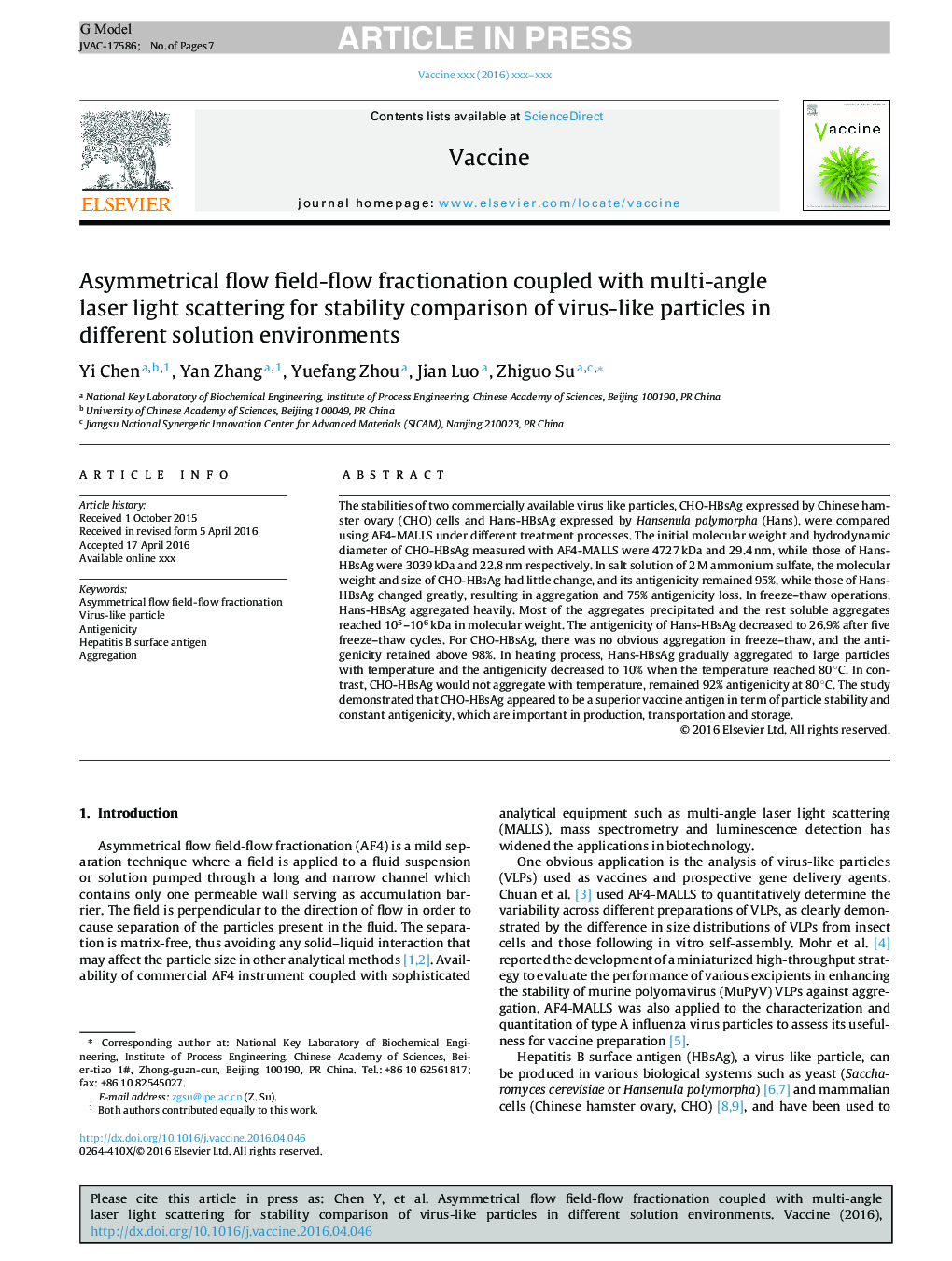| Article ID | Journal | Published Year | Pages | File Type |
|---|---|---|---|---|
| 10962716 | Vaccine | 2016 | 7 Pages |
Abstract
The stabilities of two commercially available virus like particles, CHO-HBsAg expressed by Chinese hamster ovary (CHO) cells and Hans-HBsAg expressed by Hansenula polymorpha (Hans), were compared using AF4-MALLS under different treatment processes. The initial molecular weight and hydrodynamic diameter of CHO-HBsAg measured with AF4-MALLS were 4727 kDa and 29.4 nm, while those of Hans-HBsAg were 3039 kDa and 22.8 nm respectively. In salt solution of 2 M ammonium sulfate, the molecular weight and size of CHO-HBsAg had little change, and its antigenicity remained 95%, while those of Hans-HBsAg changed greatly, resulting in aggregation and 75% antigenicity loss. In freeze-thaw operations, Hans-HBsAg aggregated heavily. Most of the aggregates precipitated and the rest soluble aggregates reached 105-106 kDa in molecular weight. The antigenicity of Hans-HBsAg decreased to 26.9% after five freeze-thaw cycles. For CHO-HBsAg, there was no obvious aggregation in freeze-thaw, and the antigenicity retained above 98%. In heating process, Hans-HBsAg gradually aggregated to large particles with temperature and the antigenicity decreased to 10% when the temperature reached 80 °C. In contrast, CHO-HBsAg would not aggregate with temperature, remained 92% antigenicity at 80 °C. The study demonstrated that CHO-HBsAg appeared to be a superior vaccine antigen in term of particle stability and constant antigenicity, which are important in production, transportation and storage.
Keywords
Related Topics
Life Sciences
Immunology and Microbiology
Immunology
Authors
Yi Chen, Yan Zhang, Yuefang Zhou, Jian Luo, Zhiguo Su,
